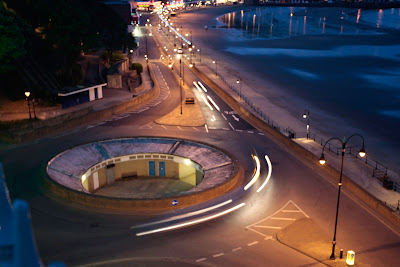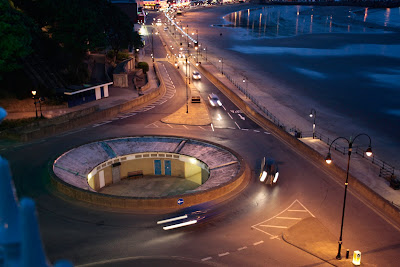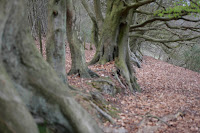 30 seconds
30 seconds10 seconds
 5 seconds
5 seconds 3.2 seconds
3.2 seconds 1.3 seconds
1.3 seconds 0.6 second
0.6 second 0.3 second
0.3 second I tried this with cars passind on a road in daylight, but it was too boring, so I went to Scarborough seafront at twilight and took these shots of the promenade from Spa bridge, using a tripod.
I tried this with cars passind on a road in daylight, but it was too boring, so I went to Scarborough seafront at twilight and took these shots of the promenade from Spa bridge, using a tripod.The 0.3 second shot just about freezes the motion of the cars, but the 30 second exposure gives nice light trails of the car lights. In between the images of the cars are progressively blurred out until they become invisible at 5 seconds. Unfortunately there were few people about for comparison, and it would have been better if the tide was in to see the difference exposure time made to the waves.








